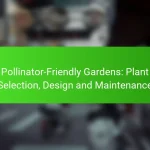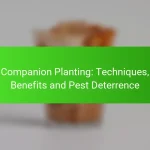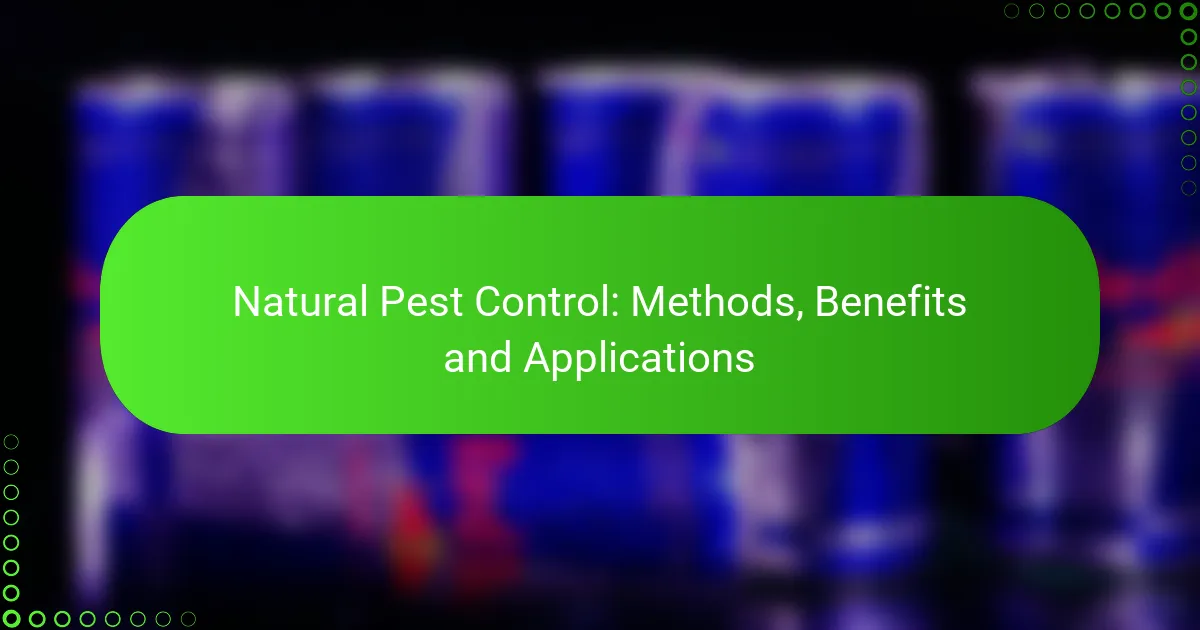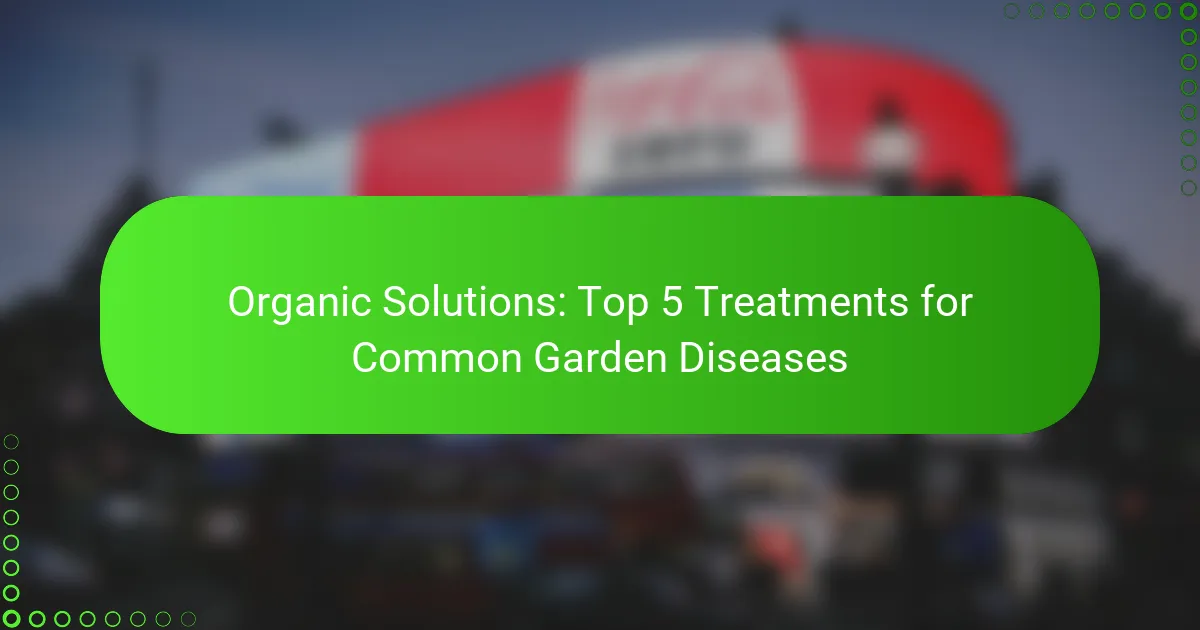Common garden pests can significantly impact plant health and yields, making effective identification and management crucial for any gardener. In South Africa, pests such as aphids, whiteflies, and spider mites are prevalent, and recognizing their unique traits is essential for control. By understanding the role of natural predators, gardeners can foster a balanced ecosystem that minimizes reliance on chemical pesticides.

What are common garden pests in South Africa?
Common garden pests in South Africa include aphids, whiteflies, spider mites, mealybugs, and cutworms. These pests can damage a variety of plants, leading to reduced yields and poor plant health if not managed effectively.
Aphids
Aphids are small, soft-bodied insects that typically cluster on the undersides of leaves. They feed on plant sap, which can lead to yellowing leaves and stunted growth. Natural predators like ladybugs and lacewings can help control aphid populations.
To manage aphids, consider introducing beneficial insects or using insecticidal soap. Regularly inspect your plants for signs of infestation and act quickly to prevent larger outbreaks.
Whiteflies
Whiteflies are tiny, white-winged insects that also suck sap from plants, causing similar damage as aphids. They are often found on the undersides of leaves and can produce a sticky residue known as honeydew, which attracts other pests.
Controlling whiteflies can involve using yellow sticky traps to capture adults and introducing natural predators like parasitic wasps. Maintaining plant health through proper watering and fertilization can also make plants less susceptible to infestations.
Spider mites
Spider mites are microscopic pests that thrive in hot, dry conditions. They create fine webs on plants and cause leaf discoloration and stippling as they feed on plant tissue. High populations can lead to significant damage and even plant death.
To manage spider mites, increase humidity around plants and regularly spray them with water. Introducing predatory mites can also help keep their numbers in check.
Mealybugs
Mealybugs are small, white, cottony insects that feed on plant sap, often found in leaf axils and on stems. They can weaken plants and lead to sooty mold growth due to their honeydew excretion.
Control mealybugs by wiping them off with a cotton swab dipped in alcohol or using insecticidal soap. Regular monitoring and early intervention are key to preventing severe infestations.
Cutworms
Cutworms are larvae of various moth species that can damage young plants by cutting them off at the soil level. They are typically found in the soil and are most active at night.
To manage cutworms, consider using collars made of cardboard or plastic around young plants to prevent them from being cut. Regularly tilling the soil can also help disrupt their lifecycle.

How to identify garden pests?
Identifying garden pests involves observing specific traits and behaviors that distinguish them from beneficial insects. Key factors include their physical appearance, the damage they cause to plants, and their life cycle stages.
Visual characteristics
Garden pests can often be identified by their distinct visual traits. Common pests like aphids are small, soft-bodied insects that may appear green or black, while caterpillars can vary in color and often have a segmented body. Look for unusual shapes, sizes, and colors that differ from the typical flora and fauna in your garden.
Additionally, some pests, such as spider mites, may leave fine webbing on plants, which is a clear indicator of their presence. Familiarizing yourself with the visual characteristics of both harmful and beneficial insects can help you make quick identifications.
Damage patterns
Different pests cause unique damage patterns on plants, which can aid in identification. For instance, leaf miners create winding trails within leaves, while beetles may chew holes in foliage. Recognizing these patterns can help you pinpoint the specific pest affecting your garden.
Moreover, some pests, like slugs, leave a slimy trail and cause irregular holes in leaves, while others, such as root maggots, affect the roots and can lead to wilting or stunted growth. Regularly inspecting your plants for these signs can help you catch infestations early.
Life cycle stages
Understanding the life cycle stages of garden pests is crucial for effective management. Many pests, such as aphids and whiteflies, go through several stages, including egg, larva, pupa, and adult. Identifying these stages can help you determine the best time to apply control measures.
For example, targeting the larval stage of caterpillars with appropriate treatments can be more effective than waiting until they become adults. Keeping track of the life cycles of common pests in your area will enhance your pest management strategies and reduce damage to your plants.
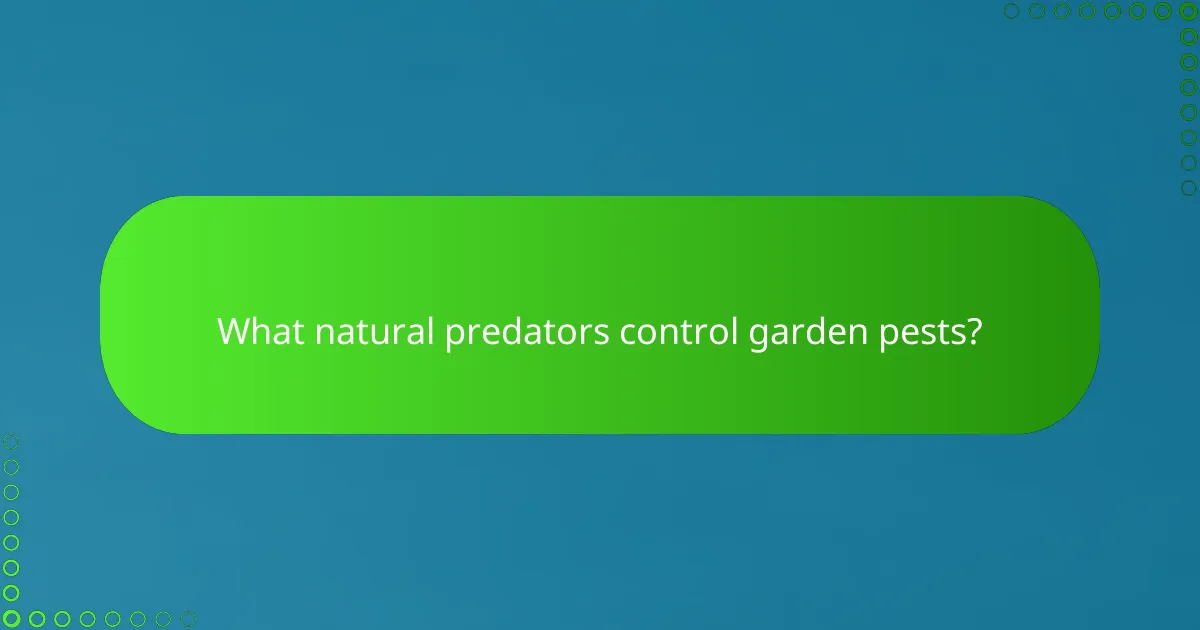
What natural predators control garden pests?
Natural predators are beneficial insects and animals that help manage garden pests by preying on them. Utilizing these predators can reduce the need for chemical pesticides, promoting a healthier garden ecosystem.
Ladybugs
Ladybugs, or ladybird beetles, are well-known for their appetite for aphids, a common garden pest. A single ladybug can consume hundreds of aphids in a week, making them highly effective for pest control.
To attract ladybugs to your garden, plant flowers such as dill, fennel, and yarrow. Avoid using pesticides that can harm these beneficial insects, and consider releasing them in the evening when they are most active.
Lacewings
Lacewings are another valuable predator, particularly effective against aphids, thrips, and mealybugs. Their larvae, known as “aphid lions,” are voracious eaters and can consume up to 200 aphids a week.
To encourage lacewings, provide a diverse range of plants and avoid broad-spectrum insecticides. You can also purchase lacewing eggs or larvae from garden supply stores to boost their population in your garden.
Parasitic wasps
Parasitic wasps are tiny insects that lay their eggs inside or on the bodies of pest insects, such as caterpillars and aphids. As the wasp larvae develop, they consume the host, effectively controlling pest populations.
To utilize parasitic wasps, identify the specific pests in your garden and choose the appropriate wasp species. Ensure your garden has flowering plants to provide food for adult wasps, enhancing their effectiveness.
Birds
Birds are natural predators that can help control various garden pests, including caterpillars, beetles, and slugs. Attracting birds to your garden can significantly reduce pest populations while adding beauty to your outdoor space.
To attract birds, provide bird feeders, baths, and nesting sites. Plant native shrubs and trees that offer shelter and food sources. Avoid using harmful pesticides that can deter birds from visiting your garden.

What are effective management strategies for garden pests?
Effective management strategies for garden pests include using organic insecticides, implementing companion planting, establishing physical barriers, and practicing crop rotation. These methods help control pest populations while minimizing harm to beneficial insects and the environment.
Organic insecticides
Organic insecticides are derived from natural sources and can effectively manage garden pests without the harsh chemicals found in synthetic options. Common organic insecticides include neem oil, diatomaceous earth, and insecticidal soaps. When using these products, it’s essential to follow application guidelines to avoid harming beneficial insects.
Consider applying organic insecticides during the early morning or late evening when pollinators are less active. This timing helps protect bees and other beneficial organisms while targeting pests effectively.
Companion planting
Companion planting involves growing certain plants together to naturally deter pests or attract beneficial insects. For example, marigolds can repel nematodes and aphids, while basil can help protect tomatoes from whiteflies. This strategy not only enhances pest management but also promotes biodiversity in the garden.
To maximize the benefits of companion planting, research compatible plant combinations and consider planting them in close proximity. This approach can lead to healthier plants and potentially higher yields.
Physical barriers
Physical barriers are effective tools for protecting plants from pests. Options include row covers, nets, and cloches that physically block insects from reaching the plants. These barriers are particularly useful for protecting young seedlings and vulnerable crops.
Ensure that barriers are securely anchored to prevent pests from sneaking underneath. Regularly check for any damage or gaps that could allow pests access to your plants.
Crop rotation
Crop rotation involves changing the types of crops grown in a specific area each season to disrupt pest life cycles and reduce soil-borne diseases. By rotating crops, you can prevent pests that thrive on specific plants from becoming established in your garden.
Plan your crop rotation by grouping plants with similar nutrient needs and pest vulnerabilities. Aim to rotate crops every year to maintain soil health and minimize pest pressures effectively.

How to choose the right pest management method?
Selecting the appropriate pest management method involves assessing the type and severity of the pest problem, as well as considering environmental impacts. Effective management balances pest control with ecological health, ensuring that solutions are sustainable and safe for beneficial organisms.
Assessing pest severity
To assess pest severity, start by identifying the specific pests present in your garden and determining their population levels. This can be done through regular monitoring and visual inspections, looking for signs such as damage to plants or the presence of pests themselves.
Once identified, classify the severity of the infestation as low, moderate, or high. Low severity might involve a few pests that can be managed naturally, while high severity may require more aggressive interventions. Keep in mind that some pests may have natural predators that can help control their numbers.
Evaluating environmental impact
When evaluating the environmental impact of pest management methods, consider both immediate and long-term effects on the ecosystem. Chemical pesticides may provide quick results but can harm beneficial insects and soil health, while organic options tend to be safer for the environment.
Assess how your chosen method affects non-target species, water quality, and soil health. For instance, using neem oil or insecticidal soap can be effective while minimizing harm to beneficial insects. Always aim for integrated pest management strategies that combine various methods for a more sustainable approach.



